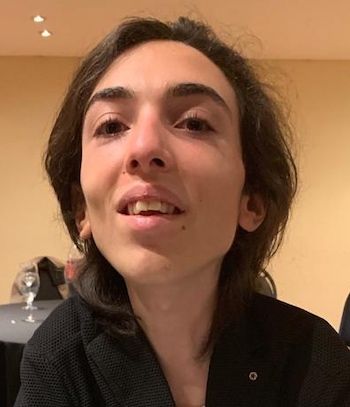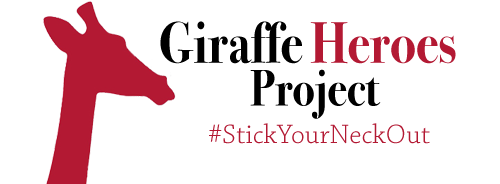Thiago Feltinsky

Un héroe que lucha por encontrar una cura para FHL1
Resumen. Thiago padece una enfermedad de la cual no se tiene mucho conocimiento. La falta de investigación se debe a que muy pocas personas en el mundo la padecen. En plena adolescencia, él decidió mostrar su padecimiento y exponerse para luchar por esa minoría, para pedir que se estudie el gen FHL1. Si lo consigue, tal vez otras personas puedan tener un futuro mejor.
Perfil. Desde muy chiquito, Thiago es amante de los deportes, especialmente del fútbol. Cuando tenía 8 años empezó a sentir que algunas cosas le costaban mucho esfuerzo, por ejemplo, atarse los cordones de los botines. Sus padres lo llevaron a distintos médicos, pero ninguno se daba cuenta de qué le estaba pasando. Al poco tiempo, Thiago corría en puntas de pie y entonces los médicos tuvieron algunas sospechas. Después de muchas consultas y estudios, las dolencias y las incomodidades de Thiagui tenían nombre: gen FHL 1. Un gen muy raro que le produce una severa distrofia muscular y lo hace en forma lenta y agazapada, como si el hecho de aparecer lentamente lo hiciese menos doloroso. Todo lo contrario.
Cuando llegaron al diagnóstico, Thiago y su familia se ilusionaron. Él se imaginó corriendo otra vez, metiendo goles, caminando, subiendo escaleras. Pero no. El gen recién empezaba a crecer y nadie sabía cómo detenerlo. A los 11 años dejó de caminar, su columna se puso rígida, perdió tonicidad en brazos y piernas y su cuello se fue retrayendo. Las consultas médicas no alcanzaban, visitaron a especialistas de muchos países, pero ninguno tenía pistas que arrojaran certeza.
La mamá de Thiago también tiene el gen FHL 1, solo que empezó a manifestarse a una edad más avanzada. La llaman “La enfermedad de la caja de Pandora”. Está llena de sorpresas, o más bien de pesadillas, y no tiene un comportamiento similar en todos los cuerpos.
Thiago y su mamá, Vanesa, no solo padecen la enfermedad. Padecen también el hecho de ser parte de una minoría: ellos representan alrededor del 1% de todos los enfermos del gen FHL 1 en el mundo entero. La cifra es aproximada porque no hay números oficiales ni relevamientos sobre esta patología. Lamentablemente, ese porcentaje parecía explicarlo todo. Significaba el avance de la enfermedad, de los dolores, del debilitamiento del cuerpo. “Son pocos”, les dijeron, por eso no se investigó hasta ahora. Y como no se investiga no se conoce la cura; ni siquiera se sabe cómo evitar que el debilitamiento muscular alcance el corazón o los pulmones.
A los 15 años, en plena adolescencia, Thiago decidió exponerse, narrar su historia. Eligió volverse visible. Pensó que si contaba su caso y la gente lo apoyaba, entonces podría tener más probabilidades de ser escuchado entre aquellos que deciden qué se investiga y qué no. Si lograba que alguien se propusiera finalmente estudiar el gen, tal vez podría ayudar a quienes recién comenzaban a transitar el diagnóstico e incluso su mamá y él podrían imaginarse un futuro más auspicioso.
Con esa idea en mente, una madrugada creó una página en la que desplegó su historia: era hora de pedir ayuda. Se fue a dormir creyendo que en pocos días la borraría. Sin embargo, al día siguiente ya tenía miles de likes. Su hermano diseñó el logo y Fhl1internacional empezó a crecer en todas las redes sociales.
Primero en su país, Argentina, su caso se empezó a difundir entre amigos, conocidos, redes, radios, TV y empezaron a aparecer los otros cientos, los que formaban parte de esta minoría. El logo de la campaña es “Somos pocos, pero valemos mucho”. La fuerza y el compromiso de Thiago son enormes, él pide que no los dejemos solos.
Logró presentar su caso en la Organización Mundial de la Salud, consiguió el apoyo de Lionel Messi y de muchos otros seguidores. A Thiago lo están “viendo”. Dos científicos ya están interesados en desentrañar lo que se esconde detrás del temido gen. Otras personas que padecen la enfermedad también se unieron a la campaña.
La rueda comenzó a girar... Que empiecen las investigaciones, los estudios, las pruebas. Que consigan buenos resultados para que Thiago y los demás puedan hacer lo que los haga felices. Y que todas las minorías encuentren a un guerrero, un héroe del tamaño de Thiago que se comprometa como él a luchar por sus derechos.
-----
A Hero Fighting to Finding a Cure for FHL1
Summary. Sixteen year-old Thiago Felstinsky suffers from having the FHL1 gene, a wasting disease on which there’s been very little research because only a handful of people have it worldwide. Thiago has launched a web and social media campaign to make his suffering visible and to spark more testing and research to find a cure.
Profile. Ever since he was very little, Thiago Felstinsky has been a sports fan, especially enthusiastic about football. When he was eight, he started feeling that some things, such as tying the shoelaces of his football boots, demanded too much effort. His parents took him to several doctors, but none of them was able to find out what was wrong with him. After some time, Thiago was running on tiptoes and it was then that doctors started to get suspicious. After plenty of hospital visits and tests, his discomfort had a name: the FHL 1 gene, which is a very rare gene that causes muscular dystrophy. The weakening occurs very slowly and treacherously, as if its slow progression made it less painful.
Quite the opposite.
When the doctors reached a diagnosis, Thiago and his family believed there was a glimmer of hope. He pictured himself running again, scoring goals, climbing stairs. Unfortunately, that would not be the case. The gene had just started progressing and no one knew how to stop it. At eleven, he stopped walking, his back became stiff, he lost tonicity in his arms and legs and his neck started to retract. Doctor’s appointments were not enough: Thiago and his family visited specialists from many countries, but they didn’t have any hints that could give them some sense of security or certainty.
Thiago’s mum also had the FHL 1 gene, the only difference being that her weakness occurred at a later age. This disorder is known as “Pandora’s box.”It’s full of surprises, or more accurately, full of nightmares and it doesn’t behave in the same way in all bodies.
Not only do Thiago and his mum suffer from this disorder, they also have to put up with another situation. They belong to a minority: there only about 200 carriers of the FHL 1 gene worldwide, a figure that is approximate because there are no official statistics on this pathology. “There are very few of you,” they were told. “This is why there hasn’t been any research on it so far.” As it hasn’t been studied, the cure is not yet known. Doctors don’t even know how to prevent the dystrophy from getting to the heart or the lungs. Meanwhile, Thiago’s body continues to weaken.
At age fifteen, Thiago decided to tell his story. He believed that if talked about his case and received people’s support then he’d have more chances of being listened to by those who decide which conditions are researched and which aren’t. He thought that if he managed to convince someone of studying the gene, maybe he would be able to help those who had just received their diagnosis and both his mum and he would also be able to imagine a brighter future.
With that idea in mind, one late night, he set up a website in which he told his whole story: it was time to ask for help. He went to sleep believing that in a few days he would close the website. On the contrary, it already had thousands of visitors the following day. His brother designed a logo and “Fhl1 international” became popular in all social networks, beginning in his own country Argentina.
Then, his case started spreading among friends, acquaintances, networks, and radio and TV channels. Others who belonged to this minority started revealing themselves by the hundreds. The campaign slogan became: “We are a few but we are worth a lot.” Thiago’s strength and commitment are huge, and he is asking for our support.
He has now successfully presented his case before the World Health Organization and he has received support from famous people such as the footballer Lionel Messi. Thiago is being “seen.” Two scientists are already interested in finding out what lies behind this terrifying gene. Others who suffer from this disorder have also joined the campaign.
The wheel has just started turning... Let the research, tests and trials begin. Hopefully, the outcome will be positive for Thiago and others who suffer from the FHL1 gene. And beyond that, hopefully, all minorities who suffer can find a warrior, a hero perhaps no bigger than Thiago, who is as committed as he is to fighting for their cause.
